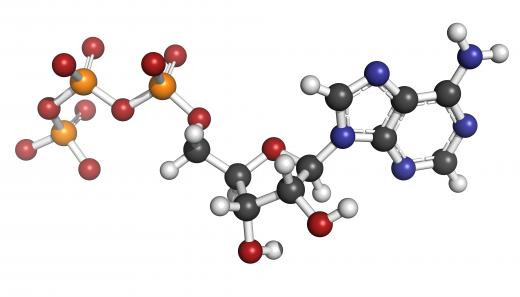What Is Aerobic Fermentation?
The term "aerobic" means in the presence of oxygen; for example, it is used in aerobic exercise to show the body is using oxygen to burn sugars for energy. This process of burning simple sugars to produce energy in cells is called aerobic respiration. Human and plant cells can create some energy without oxygen being present, a process called aerobic fermentation. This term is perhaps mis-named, because fermentation is normally an anaerobic process, or produced without oxygen.
Humans have used fermentation for thousands of years to produce alcohol from various plants and grains. The process uses a reaction between yeast and plant sugars to produce alcohol and a gas by-product, usually carbon dioxide. Decay of plant and animal matter in swamps, marshes and trash landfills is also an anaerobic fermentation process, which produces carbon dioxide, methane and other gases.

In humans and animals, energy is created by a complex reaction in cells using oxygen, the sugar glucose, and various trace chemicals found in the body. Carbon dioxide is formed from this reaction, and is removed from the body by exhaling it from the lungs during breathing. Normal cell processes are aerobic, and the term used for the process is aerobic respiration. A key chemical used to provide energy in cells is called adenosine triphosphate (ATP), which results from the glucose-oxygen reaction.

Aerobic fermentation occurs when the cells demand more energy than can be produced from an oxygen reaction. Part of the cellular reaction still occurs, and some ATP is formed. Less efficient than the oxygen process, aerobic fermentation creates acids in the cells that cause muscle fatigue and eventual failure. It also uses glucose less efficiently, which is why high-energy activity with a long period of aerobic fermentation will cause rapid energy loss.

Muscle pain and loss of energy felt by humans during periods of high-energy activity is a direct result of the aerobic fermentation process. Lactic acid builds up in the muscles, and if not removed eventually causes muscle cramps and pain. The body eventually removes this excess acid after the need for energy stops, which is why humans and animals continue to breathe heavily after high-energy activity.
Understanding production of energy in cells is useful for athletes and other energy-consuming processes, because the best use of glucose and other sugars in producing energy is to maintain an aerobic level of activity. Short levels of anaerobic energy production can boost performance, but to continue will result in less energy production. Allowing the body to catch up and eliminate lactic acid from muscles can provide an ongoing energy benefit.
AS FEATURED ON:
AS FEATURED ON:













Discuss this Article
Post your comments